Glimpses of Iowa's State Normal School and its Home . . Cedar Falls
By William L. Veatch
William L. Veatch graduated from the Iowa State Normal School, now the University of Northern Iowa, in 1890. However, he did not pursue the teaching career for which his academic studies had prepared him. Instead, shortly after graduation, he set up a photography studio on Main Street in Cedar Falls, Iowa. He maintained that business until he retired in 1938. He died on May 20, 1944.
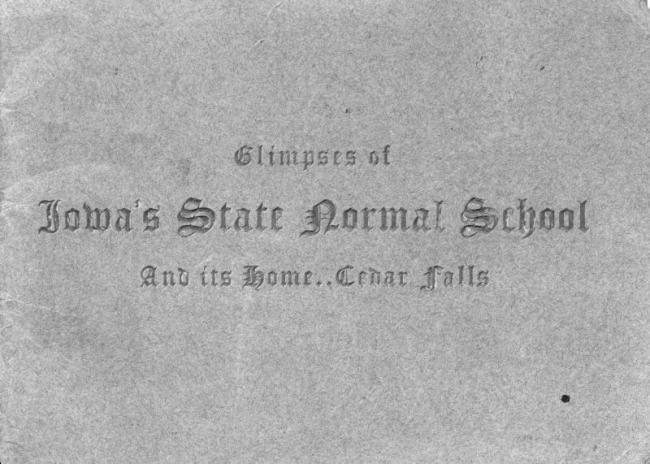
William Veatch probably took more photographs of the people and places in Cedar Falls than any other photographer of his era. He maintained especially close connections with the students, faculty, and administration of the Normal School. He even received a commission from the Normal School to take photographs of the school's facilities and programs that were displayed at the Columbian Exposition in Chicago in 1893.
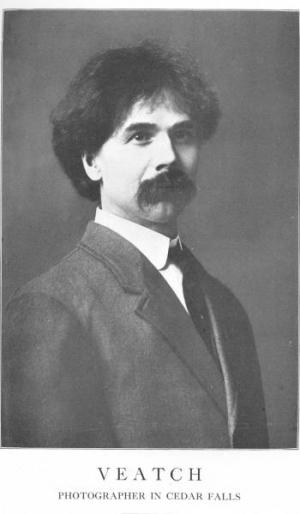
In 1902 or 1903, Mr. Veatch saw an opportunity to combine his interests in both the Normal School and the city of Cedar Falls. He composed and published a little souvenir book of photographs entitled, Glimpses of Iowa's State Normal School and its Home . . Cedar Falls. Details of the book's publication are, at this point, lost. However, its purposes seem clear. Mr. Veatch was a businessman. In those days photography was still a moderately complicated process, most frequently undertaken by professional photographers. Few Normal School students of that era would have had portable cameras of their own. So, Mr. Veatch likely concluded that there was a market for his work: he believed that students would like to have a booklet of photographs as a keepsake of their time at the Normal School. For many students, their days at the Normal School were the first time they had been away from home for any significant period. He probably also saw a secondary market among Cedar Falls citizens who wanted a convenient collection of pictures of their hometown. Mr. Veatch probably charged $2 or $3 for the booklet. The fact that this booklet still occasionally turns up among the effects of alumni of those days is a testament to its popularity. Indeed, at about the time that the booklet appeared, an editorial comment in the student newspaper, the Normal Eyte, stated:
"Mr. Veatch has for several years presented the student body with some of his work at the
beginning of the year, and it is always appreciated." (Normal Eyte, September 19, 1903)
While the booklet served its most important function as a memory book, the publication might have had at least another, possibly unforeseen purpose. When students completed their studies at the Normal School, or went home between terms, they likely took the book with them. They showed it to parents, siblings, cousins, neighbors, and friends. In days long before the appearance of Admissions Office "view books", a booklet like this might well have helped to recruit new students for the Normal School. The booklet showed impressive school buildings, new classrooms, an attractive campus, a prosperous town, many churches, and a number of recreational opportunities. The Normal School in Cedar Falls looked like a place where students could attend class on a pleasant, well-established campus, purchase things that they needed in a substantial downtown business district, take part in recreational activities, and, of course, keep their religious faith. By looking through this book, both potential students and their families might have found the Normal School in Cedar Falls to be an attractive possibility.
The booklet is 32 pages long. It measures 7 1/2 inches X 5 1/4 inches. It is printed on glossy paper with soft cardboard covers. Neither the paper nor the photo engraving process used in producing the booklet was of the highest quality. Consequently, some of the scanned images offered below show a certain amount of grandness. The binding consists of a string tie in the left margin. The booklet does not contain a date of publication. However, captions for several photographs refer to the Auditorium Building, now Lang Hall, as "the new building". In addition, many of the rooms and facilities in the Auditorium Building are featured prominently in the book. Since the Auditorium Building was completed in December 1901, it seems safe to assume that the booklet appeared in 1902 or 1903.
William Veatch was an excellent studio photographer. In situations in which he controlled the photographic environment, his portraits of individuals and groups show fine skills. His outdoor photos are not as clear and sharp as his studio work, probably due to the limitations of his equipment and the variable nature of the outdoor environment. But all of the photos are interesting at least in content.
Mr. Veatch's booklet, Glimpses of Iowa's State Normal School and its Home . . Cedar Falls, is presented below, with commentary on both the content and the historical significance of the images. The print original copy is housed in the University of Northern Iowa Archives.

This is the outside front cover of Mr. Veatch's booklet. The blank inside front cover has been omitted
from this series of scans. Note that the title uses the term "Iowa's State Normal School", with an apostrophe. The
official name of the school was the Iowa State Normal School, without an apostrophe. The addition of
the apostrophe may have been simply an error by Mr. Veatch or the printer. However, it might possibly
have been Mr. Veatch's intention to emphasize that the Normal School was the only state-supported
school in Iowa that was devoted solely to the preparation of teachers.
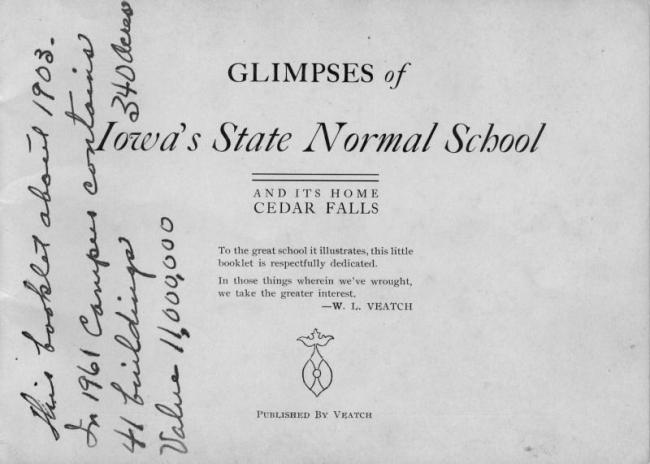
This is the title page, with a later handwritten note, likely by the book's original owner, pointing out the growth of the campus between 1903 and 1961. Note also the second part of Mr. Veatch's dedication, "those things wherein we've wrought". The phrase does have Biblical echoes. However, this part of the dedication probably refers fondly to Mr. Veatch's time as a Normal School student himself. The emblem printed below the dedication is an interesting choice. Christian iconographers used very similar devices to symbolize the Crown of Life or the descent of the Holy Spirit.
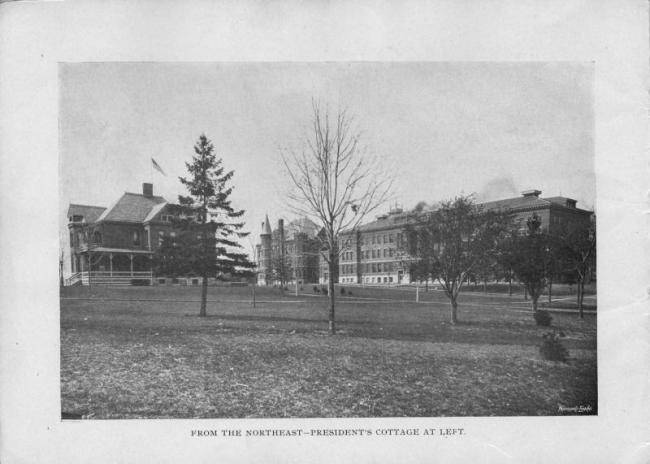
This is a view of the Normal School campus from a location near the intersection of 23rd and College
Streets. The President's Cottage (now the Honors House) is on the left. The Old Administration Building,
with its conical roof feature, is in the center. The Auditorium Building (now Lang Hall) is on the right.
The new Auditorium Building, which cost about $100,000, was a point of particular pride for the Normal
School, because it finally provided sufficient classroom, assembly, and meeting space. Perhaps just as
important, the building represented a solid commitment by the state to the future of the school.
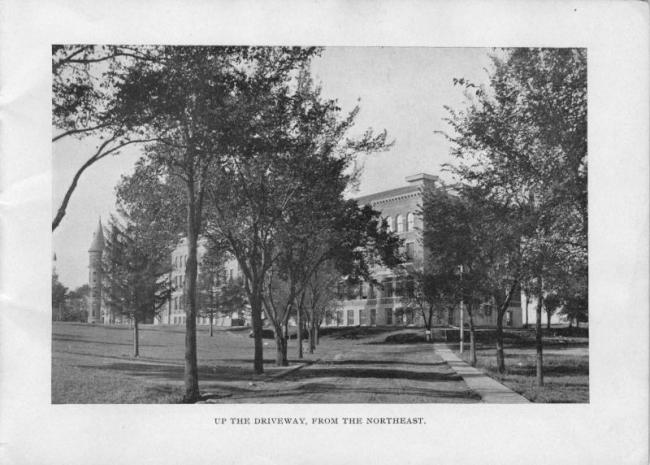
This is another, more scenic view up the cinder driveway toward the new Auditorium Building. Visitors
from the residential part of Cedar Falls and students arriving at the Cedar Falls downtown train stations
used this drive to get up onto campus. This photo was taken from a point just north of the previous
image, looking southwest from the intersection of 23rd and College Streets. The American elm trees
along the driveway thrived and made a beautiful arch over the drive, which eventually became a paved
sidewalk. All of the trees were lost to Dutch elm disease in the 1960s.

This is a view of the southeast corner of campus, near the intersection of University Avenue and College
Street. Even as early as 1903, the campus was nicely landscaped. At a time when transportation to off
campus recreation sites, or even downtown Cedar Falls, was limited, students used this area for picnics,
ceremonies, and celebrations, such as May Day. Unfortunately, many of the trees in this image are
American elms, which were lost to disease in the 1960s.

This image shows President Homer Seerley at his desk in the Old Administration Building. President
Seerley served as the chief executive officer of the school from 1886 through 1928. During this time
he had an extraordinary influence on teacher education within Iowa and throughout the country. The
contents of his office are interesting. There is a newspaper on his desk, which he likely used to learn
about General Assembly intentions and actions. He probably tracked enrollment and planned travel
on the map of Iowa behind his desk. He might have used what appears to be a small bell on his desk
to summon secretaries from an adjacent room. Note the telephone on the wall. He probably used
the telephone occasionally, but for anything serious he relied on typed correspondence and telegrams.
President Seerley was a voluminous correspondent. He wrote thousands of letters every year. It is
likely that some of the papers on his desk are now in the University Archives.
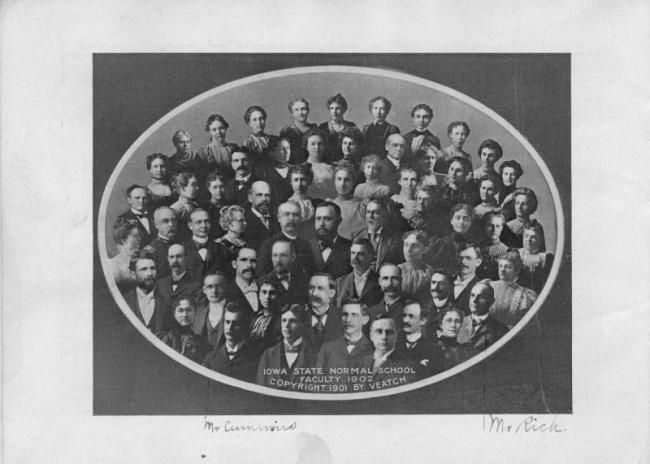
This is a composite photograph of the Iowa State Normal School faculty in 1902. It is likely that Mr. Veatch
took individual photographs of members of the faculty, and then, in a painstaking process, pasted them
together to make this image. President Seerley is in the center. In the lower margin of this booklet, the
original owner identified two faculty members, Harry Carlton Cummins, an instructor in penmanship
and bookkeeping, and Arthur W. Rich, a professor of mathematics, who also served as the Registrar.
Given the teaching specialties of these two members of the faculty, it might be a good assumption that the
original owner was a business education student.
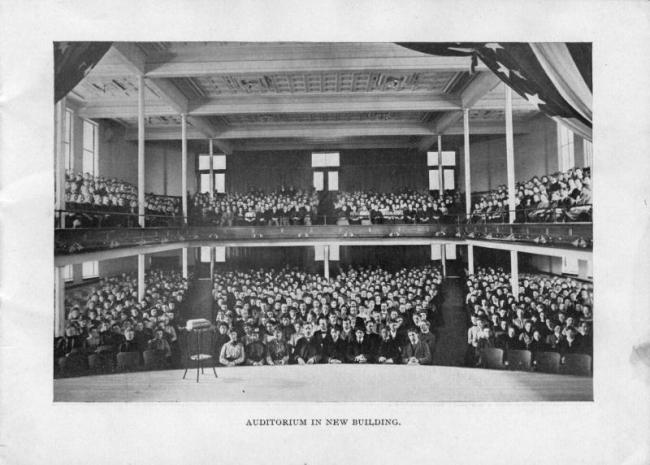
This is an image of students and faculty assembled in the auditorium in the new building, now Lang
Hall. It is likely that they were there for the daily chapel gathering. The large auditorium answered a
longstanding Normal School need. Before the opening of the new auditorium in December 1901, the
school had no large space for the presentation of dramatic and musical performances, produced by
either students or visiting groups. Nor was there a place in which President Seerley or the faculty
could make general announcements or hold chapel. The new auditorium met that need for many years.
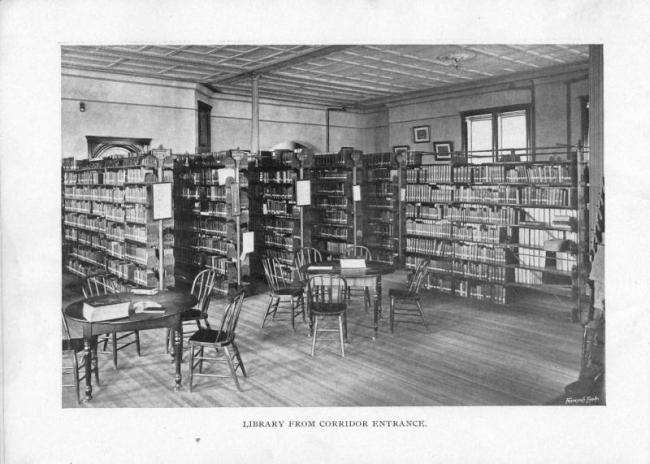
When Mr. Veatch took this photo, the library was housed in the Old Administration Building.
Facilities there were makeshift and inadequate. President Seerley was an exceptionally strong
proponent of libraries. Just a few years after this picture was taken, he led the effort to construct a
building intended from its earliest planning stages to be a college library. That building, now
called Seerley Hall, served as the school's library from 1911 through 1964. Note that there are pictures
mounted on the walls. From the very beginnings of the University of Northern Iowa, campus libraries
have served as a purposeful gallery of art for the edification of students. Note also that the library
in the Old Administration Building, whose "collaborative learning" tables are a bit less sophisticated
than those of today, does at least have electric lights.
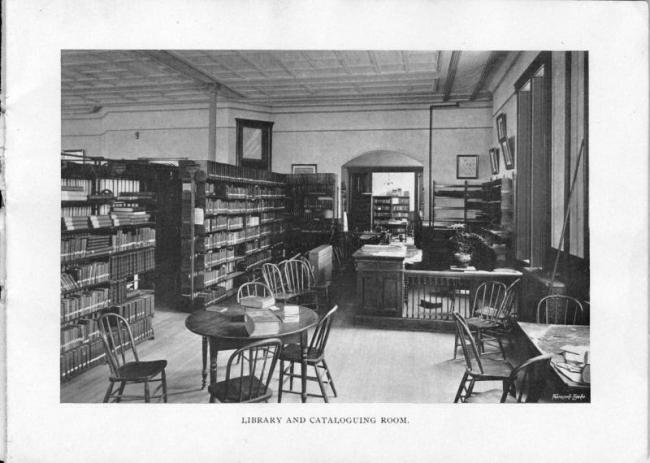
This is another view of the library and the cataloguing room in the Old Administration Building. The
"cataloguing room" is another testament to President Seerley's support of library work. He believed that
a college library staff should include those who had professional library training, especially in the
cataloguing of library materials. That training provided better library service to students and faculty and
also gave librarians the credentials necessary to become active members of the school faculty.

This is a view looking north down the long first floor corridor in the new Auditorium Building. Restoration
of what is now Lang Hall has brought the appearance of this corridor to a condition quite close to its
appearance in 1903. Note the commemorative plaques inset into the walls. Those are casts from the
Soldiers and Sailors Monument in Des Moines. In 1903, Normal School students and faculty had a deep
and reverent respect for the state's contribution to the Union triumph in the Civil War. The original
Normal School building, Central Hall, had served as an orphanage for Civil War orphans. In addition,
several Civil War veterans were members of the faculty when the Auditorium Building was erected.
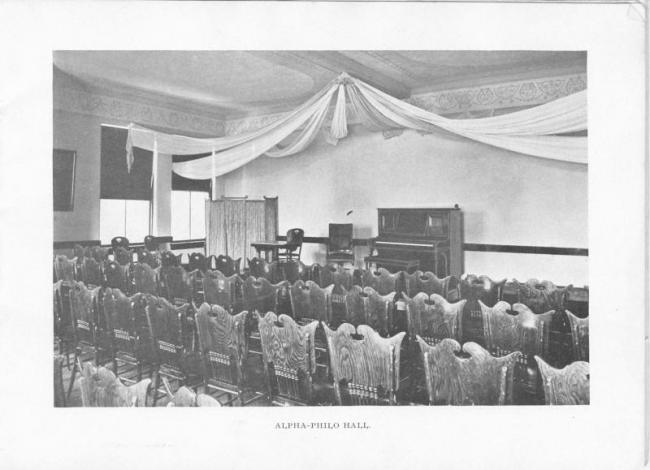
This is the home of the Alpha Literary Society and the Philomathean Literary Society in the new
Auditorium Building. Students had long felt the need for attractive rooms in which to hold their
society meetings. Literary societies were the most important student organizations at the Normal
School. All students were required to become a member of a literary society and to participate in
its activities. The official function of a literary society was to provide opportunities, under the
guidance of a member of the faculty, to speak and perform in public, to work cooperatively with
others, to behave in a civil manner, and to learn parliamentary procedure. In short, the societies
helped to prepare teachers to be polished, cultured members of the communities in which they
would serve. The societies served other, less official functions as well. They presented plays, fielded
athletics teams, and even furnished a bit of Greek society atmosphere to the campus. They provided
a safe, genteel, well-chaperoned, and productive way for the young men and women on campus to
get together. There were separate societies for men and for women, but, out of tradition or preference,
a particular men's society and a particular women's society were usually paired for social or public
performance occasions. The Alphas and the Philos were one such pair.
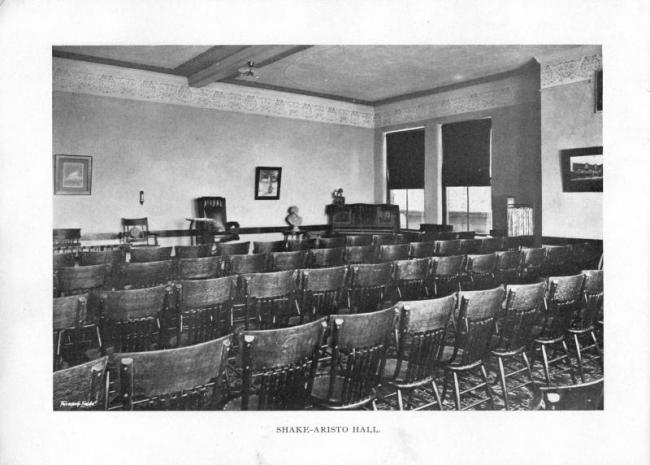
This is the home of the Shakespearean Literary Society and the Aristotelian Literary Society in the
new Auditorium Building.
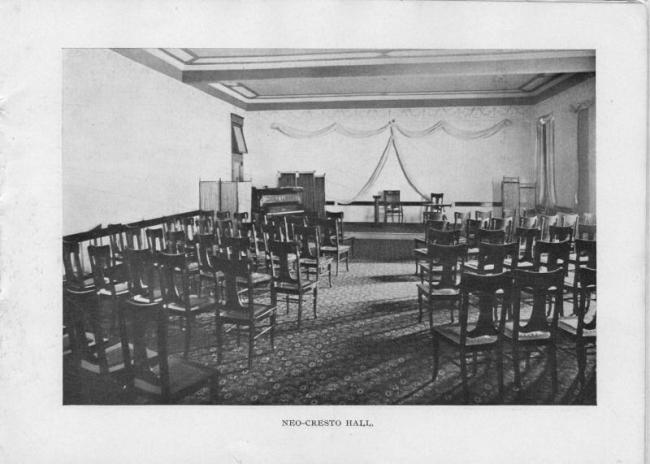
This is Neotrophian Literary Society and Chrestomathian Literary Society hall in the new Auditorium Building.
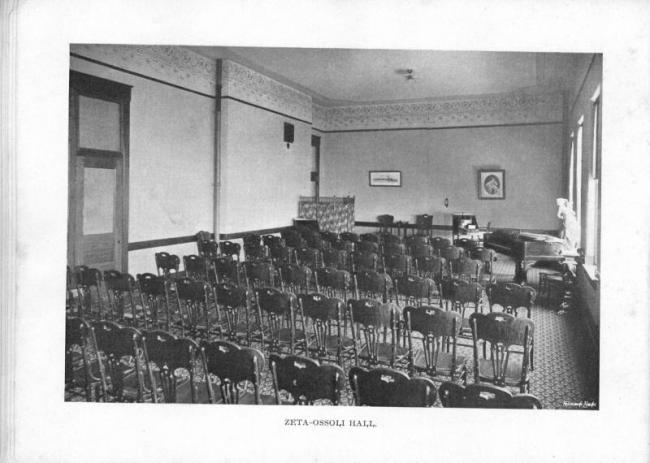
This is the home of the Zetalethean Literary Society and the Margaret Fuller Ossoli Literary Society in the
new Auditorium Building.
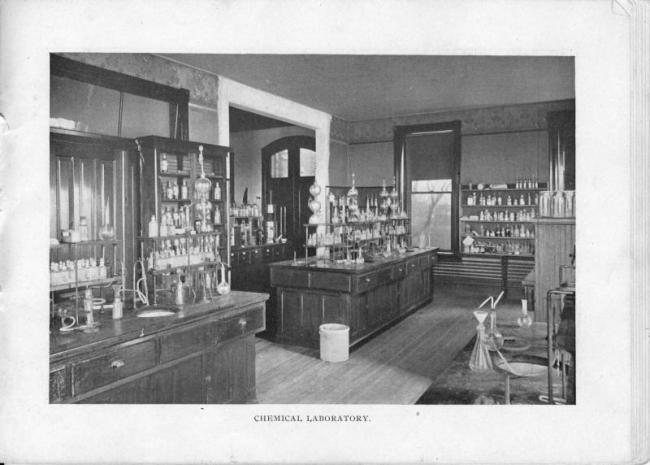
This the chemical laboratory in the Old Administration Building, which was designed to be at least
the short term home for administrative offices, laboratories, physical education facilities, and the library.
But rising enrollment and an expanding curriculum quickly showed that the Normal School needed more
and improved facilities. Physical education students welcomed the opening of the Gymnasium in 1905.
Science students and faculty moved to what is now called Begeman Hall in 1907. The new Library building
opened in 1911. Administrative offices stayed in the Old Administration Building until 1965, when they
moved into what is now called Gilchrist Hall.
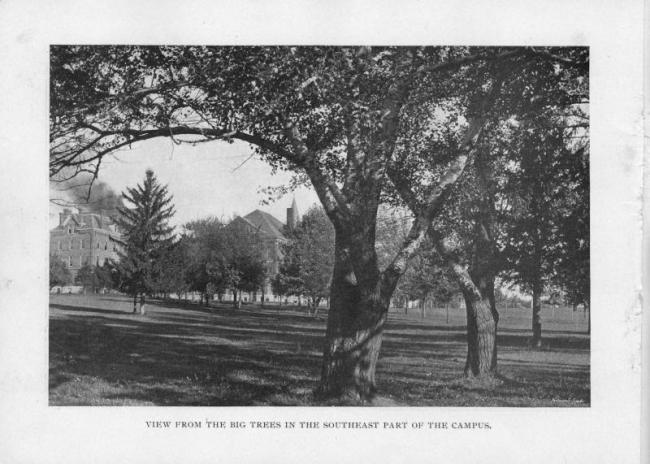
This is a view from the southeast corner of campus, near the intersection of University Avenue and
College Street, looking up toward Old Gilchrist Hall on the left and the Old Administration Building on
the right. Both of these buildings are now gone. Old Gilchrist Hall burned in 1972. The Old
Administration Building was demolished in 1984. Note the cloud of smoke over Old Gilchrist Hall from the
power plant smokestack that was then located right in the middle of campus, just north of where the
Maucker Union now stands. The fumes and ash from that stack were an annoying part of campus life for
many years.
The following two images of the Normal School military training unit are included on one page of the Veatch booklet.
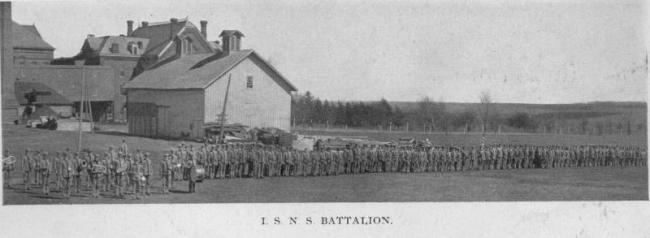
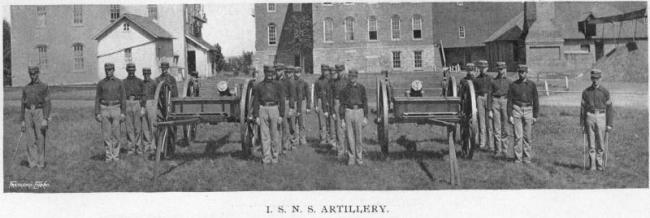
These two images were taken from near the current site of the Rod Library. The top image looks
southeast, toward the intersection of University Avenue and College Street. The large brick building is
Old Gilchrist Hall. The bottom image looks more directly east. The large brick building in the center is
Central Hall. When these pictures were taken, the large open area on the west side of campus was used for
playing fields and military drill. From 1890 through 1903, the Normal School offered a course in military
science and tactics. Able-bodied male students were required to enroll and train under the direction of a
retired military officer.
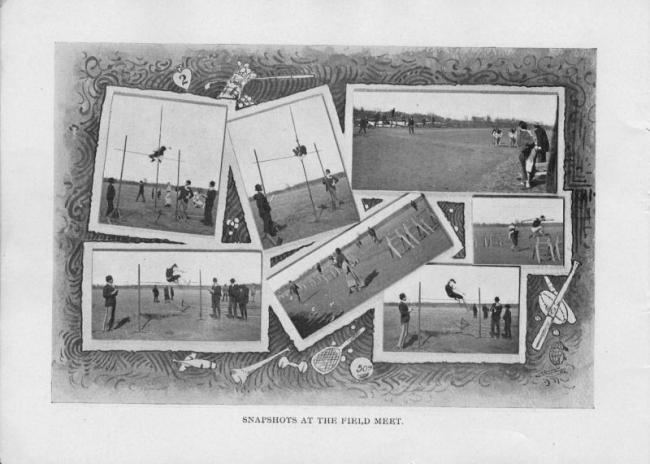
Mr. Veatch apparently took these photographs at a track and field meet in which Normal School athletes
competed. However, it is unclear whether the events took place on or off campus. Normal School students
were interested in athletics, but the nature of the institution made year-to-year, consistent competition
difficult. First, in a school devoted solely to teacher education, women were in the overwhelming majority.
And second, men who did enroll tended to stay for only a term or two and then go out to teach. Few
students of either gender persisted to a degree of any sort, because college work was not required for
teacher certification.
Note that the high jumper is clearing the bar at about five feet. The pole vaulter is probably going over
the bar in the nine to ten foot range. The sketches of sports equipment in the background of the
photographs were likely drawn by former Normal Shool student George Cowan, whose inscription,
"Cowan 02", appears in the lower right corner.
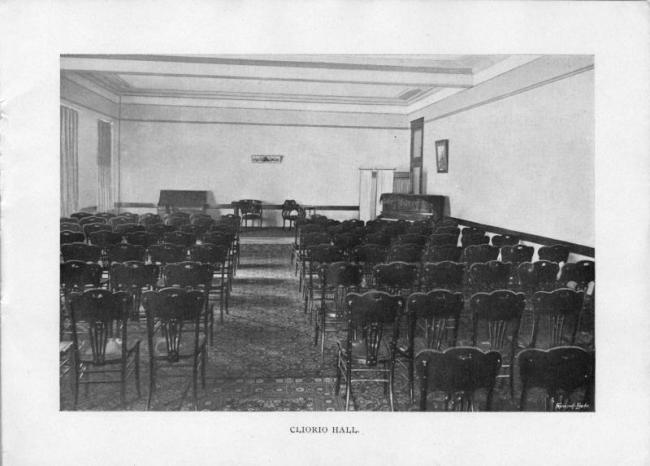
This is the home of the Cliosophic Literary Society and the Orio Literary Society in the new Auditorium
Building.
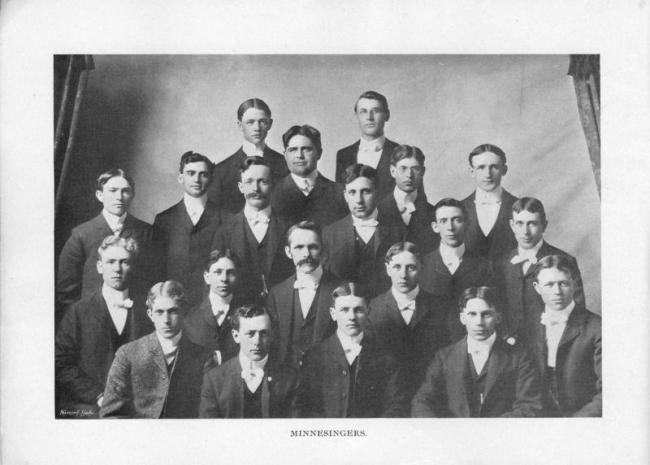
These are the Minnesingers, the Normal School's outstanding men's glee club. There were also glee
clubs for women students at the Normal School. The Minnesingers were organized during the 1888-1889
school year under the leadership of students Charles A. Fullerton and Robert Fullerton, two brothers from
the very musical Fullerton family. Charles Fullerton, with the long mustache, is in the center of this
photograph. Both Charles and Robert Fullerton later became members of the school's music faculty.
Minnesingers were exceptional performers who gave spirited concerts similar to those of UNI's modern
Varsity Men's Glee Club. They performed for occasions such as the Normal School Baccalaureate, literary
society presentations, and benefit concerts. They even made short tours around Iowa. Refreshed annually
with new student voices, the Minnesingers continued to perform until at least 1941.
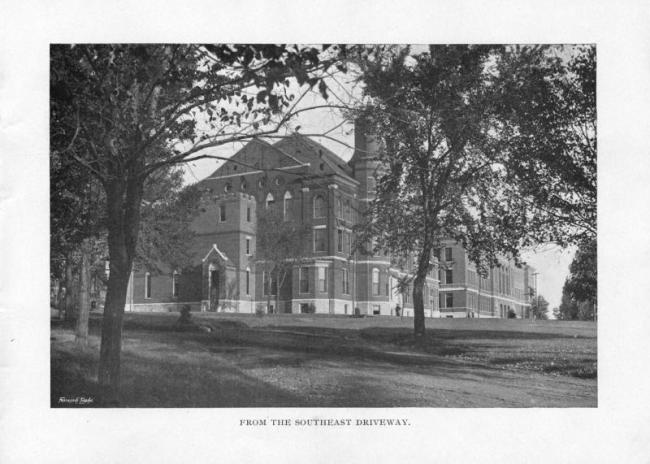
This is a view onto campus from the southeast, from the direction of the intersection of University
Avenue and College Street. Visitors coming from Waterloo would likely have used this driveway.
The building in the center is the Old Administration Building, with its enclosed, two story walkway
to Old Gilchrist Hall. This walkway made for quicker passage between classes and also helped
students avoid exposure to the elements. The building in the distance on the right is the
Auditorium Building.
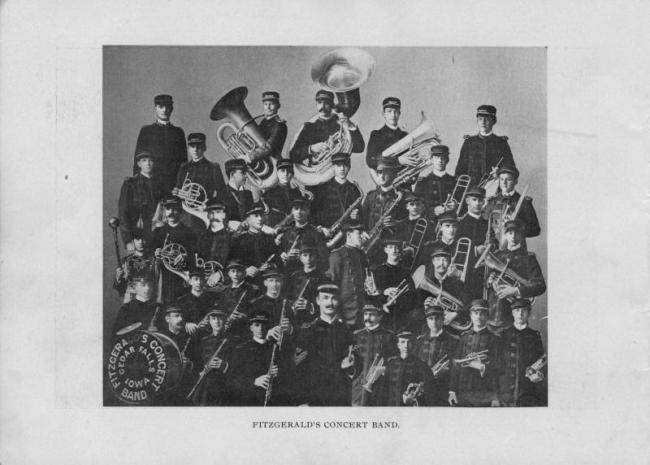
Frank A. Fitzgerald was a talented music teacher and director of bands, who joined the Normal School
faculty in 1896 as an instructor of instrumental music. He quickly established many performing groups
that included students as well as townspeople. Normal School students had the opportunity to learn to
play almost any musical instrument and then to perform in groups. Pictured in this composite photograph
is a group known as Fitzgerald's Concert Band. From the appearance of the group, it must have included
both students and local citizens.
The following two images are included on one page of the Veatch booklet.
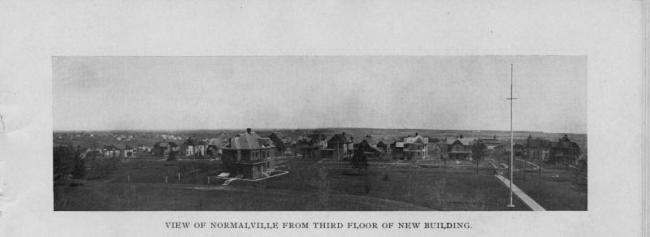
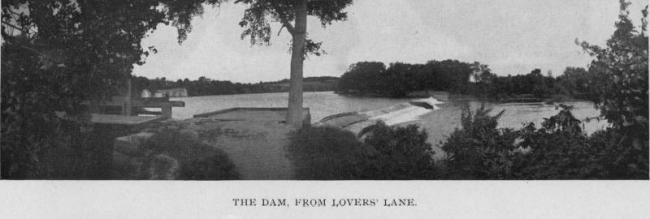
The top image is a view of College Hill, then called Normalville, from the third floor of the new
Auditorium Building, The view looks east. It is unfortunate that this image is not as clear as might be
wished. The brick building to the left of center is the President's Cottage, now called the Honors House.
24th Street, now Seerley Boulevard, runs east, just to the right of the flagpole. Rooming houses, a few
still extant, face the viewer from across College Street. It is also fairly clear that there was little or no
development to the east, beyond College Hill. The College Hill community flourished after the Normal
School closed its boarding department in 1892. Local entrepreneurs and some faculty members built large
houses within a few blocks of the school. They typically lived there with their families and rented rooms
to students.
The lower image shows the Cedar River dam, looking upriver from near First and Main Streets in Cedar
Falls. As Mr. Veatch's photographic caption indicates, the area near the dam was a favorite haunt for
students with romantic intentions.
The following two images are included on one page of the Veatch booklet.
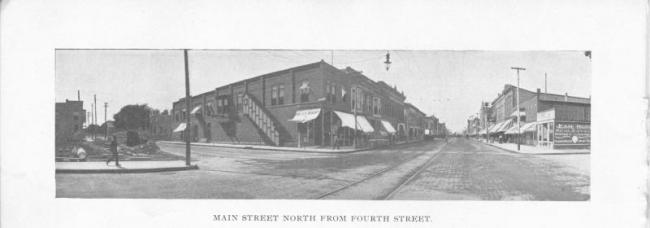
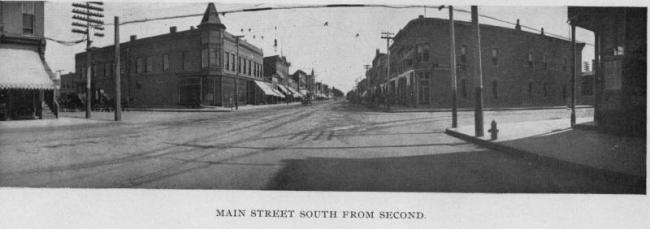
The top image shows Main Street, Cedar Falls, looking north from Fourth Street. The bottom image
shows Main Street looking south from Second Street. Note the tracks and overhead wiring for the street
railway. Many of these buildings have been extensively renovated and continue to serve well in the
thriving downtown area.
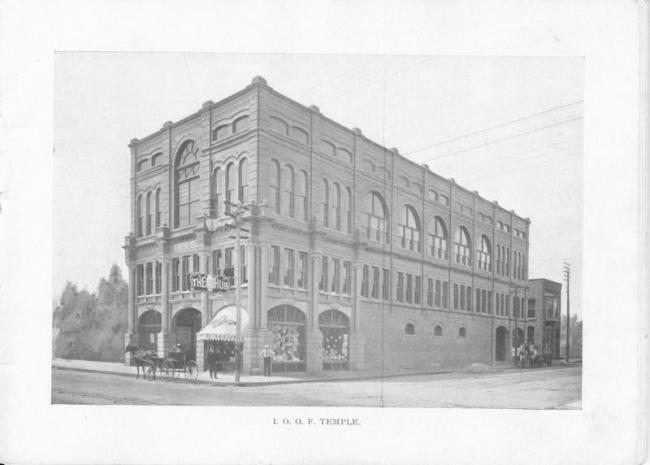
The Independent Order of Odd Fellows Temple, completed in 1902, is located on the southwest corner of
4th and Main Streets in Cedar Falls. Benevolent and altruistic organizations were important parts of the
economic, social, and philanthropic life in town. Mr. Veatch may have chosen to put an image of the
home of this particular fraternal association in his booklet because it was a new and impressive structure.
Few Main Street buildings had three stories. He may also have been interested in its eclectic architectural
style. Or perhaps he was a member of the Odd Fellows himself. It looks as if retail and service facilities
occupied the street level, with offices on the second level. The third floor was a large open space for
dances and performances. The building, which was listed on the National Register of Historic Places in 1997,
has been completely renovated in recent years. A fitness center currently occupies the first floor.
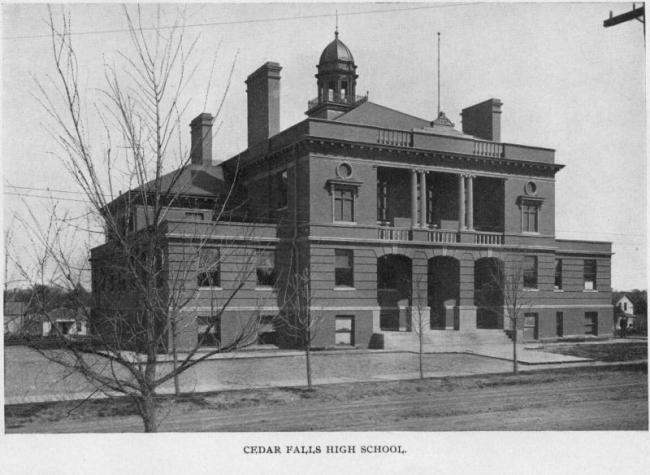
The Cedar Falls High School, located on the southeast corner of the intersection of 12th and Main Streets,
was an impressive building for its day. It is likely that many Normal School students did their student
teaching in this building. Note that in 1903, even the main streets in this part of Cedar Falls were unpaved.
The newly planted trees in front of the building would eventually add grace to the street. Even after the
new Cedar Falls High School was built on Division Street, the old building was used by the city as a
maintenance and administrative center. After the building was demolished, the city built the new Cedar
Falls Recreation Center on the site.
The following two images of the Methodist Church and St. Patrick Catholic Church are included on one page of the Veatch booklet.
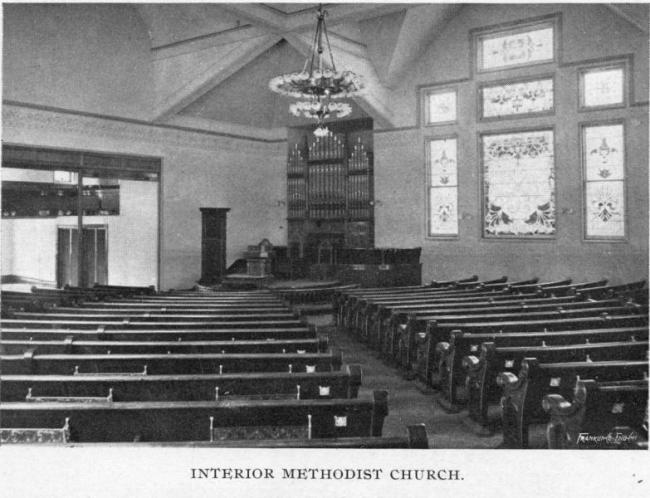

The top image shows the interior of the Methodist Church on Washington Street. The bottom image shows
the interior of St. Patrick Catholic Church on 7th Street. Both of these churches are still extant. Mr. Veatch
uses a fair amount of space in his booklet to show that Cedar Falls provided both students and townspeople
with many opportunities for worship. In 1903, there were no churches or student religious centers near
campus. Students walked or took the street railway from campus to the downtown churches.
The following two images of the Congregational Church and the Baptist Church are included on one page of the Veatch booklet.
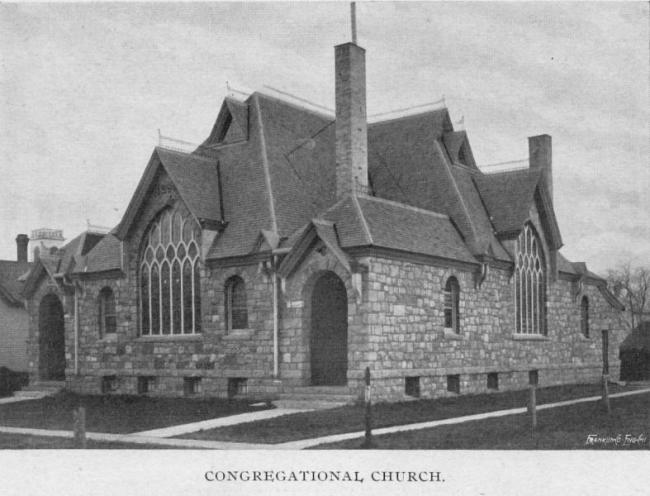
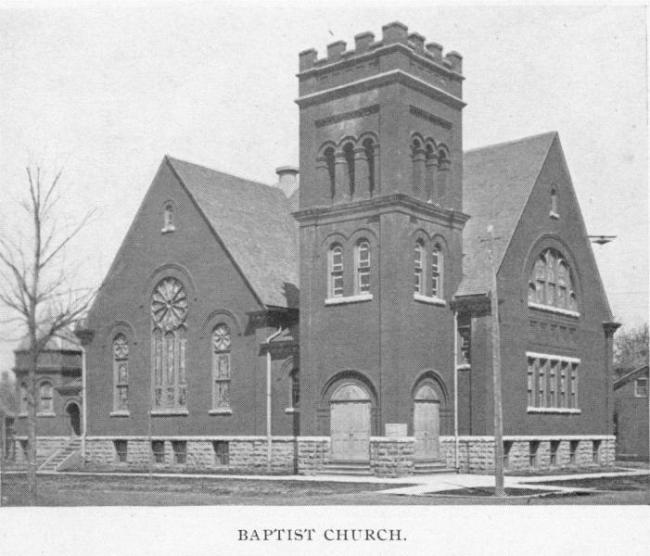
The top image shows the Congregational Church. The bottom image shows the Baptist Church.
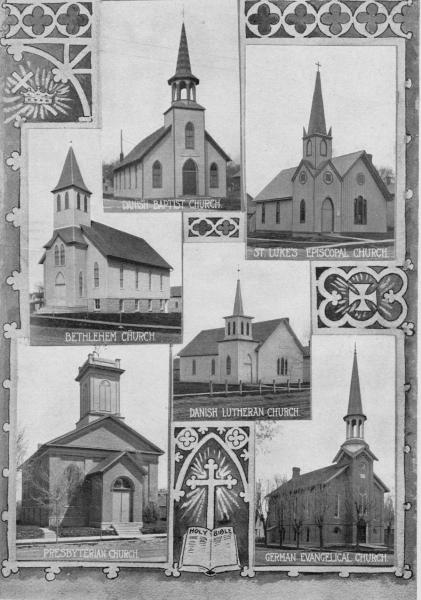
The images of churches preceding this page depict the larger, well-established congregations in Cedar
Falls. Their buildings appear large and solid. The images on this page tend to depict smaller
Cedar Falls congregations. Some of the congregations were associated with recent Danish and German
immigrants to Iowa. From the top and moving clockwise: the Danish Baptist Church, St. Luke
Episcopal Church, the Danish Lutheran Church, the German Evangelical Church, the Presbyterian
Church, and Bethlehem Church. Though the names of some of these congregations have changed,
most are still active in Cedar Falls today.
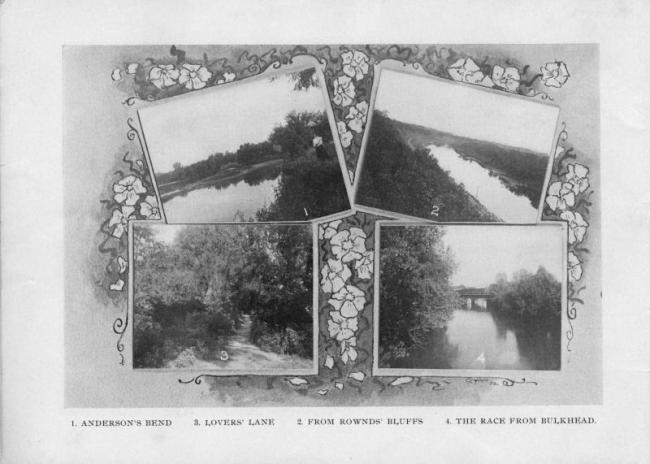
Normal School students found the Cedar River, just north of downtown Cedar Falls, to be an attractive
recreation area. Carrying picnic baskets or sports equipment, they walked or took the street railway
downtown to have fun. They walked on trails, took a canoe on the river, or stood on high points to view
the scenery. Away from close faculty supervision on campus, they enjoyed being out on their own
for awhile. While these images are not of the best quality, we have enlarged them below for better viewing.
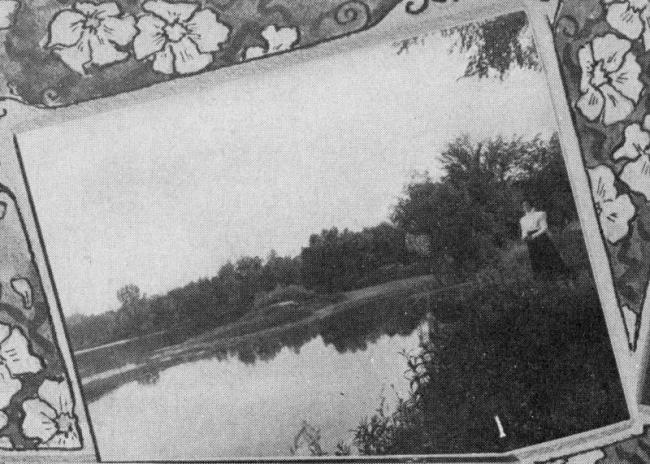
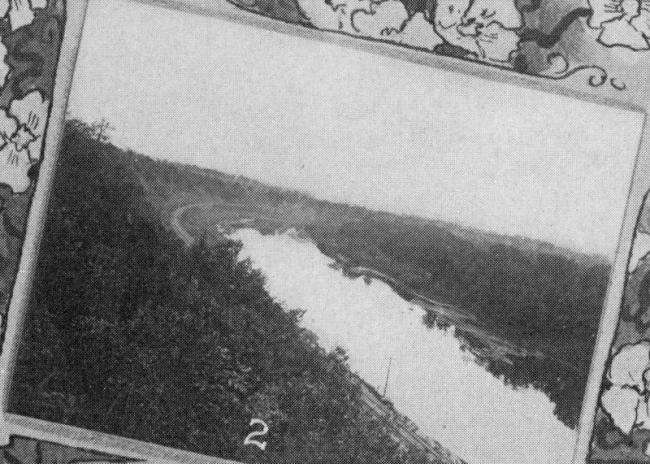
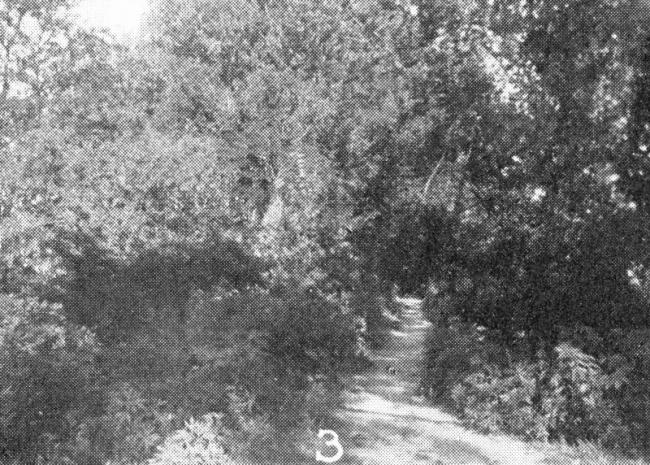
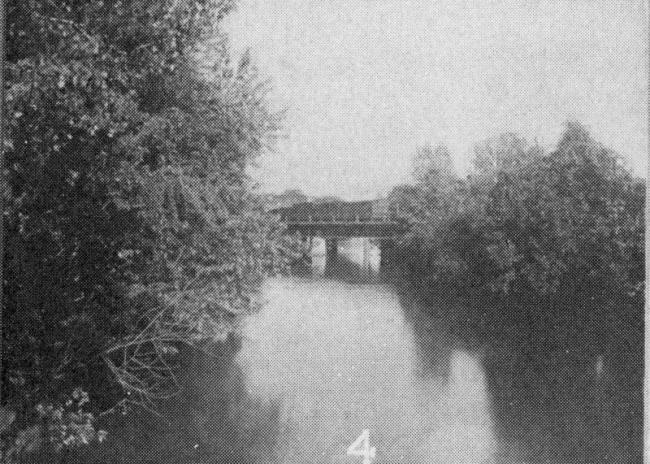
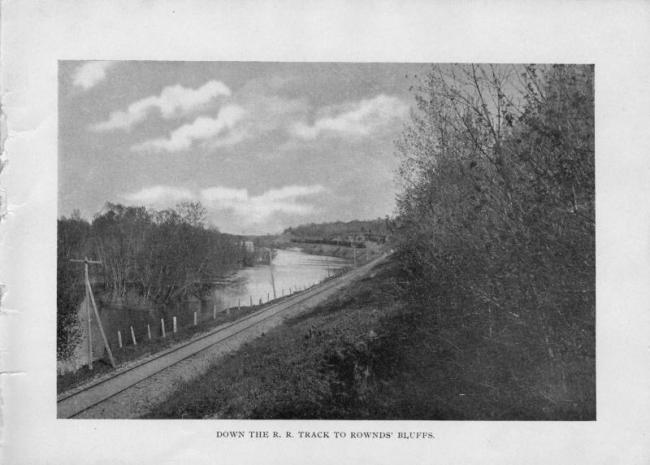
This is a view looking downriver. Rownd's Bluff is located on the south side of the Cedar River and a bit
west of Franklin Street. These railroad tracks still cross Franklin Street just west of the Ice House Museum.
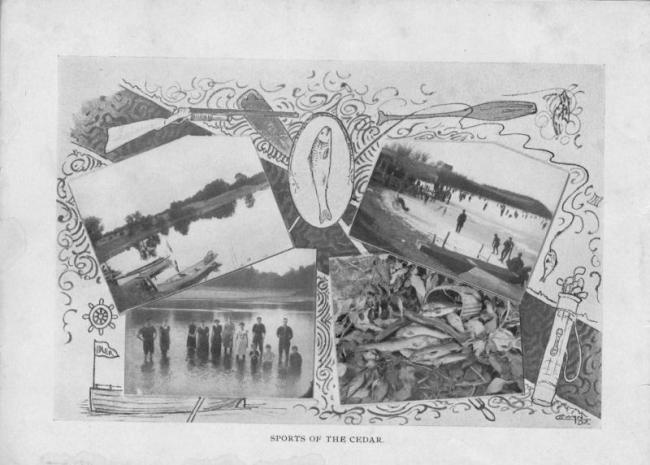
Mr. Veatch here offers yet more views of recreation on the Cedar River. Again, while the quality of these
outdoor images is not the best, we do offer enlargements below.
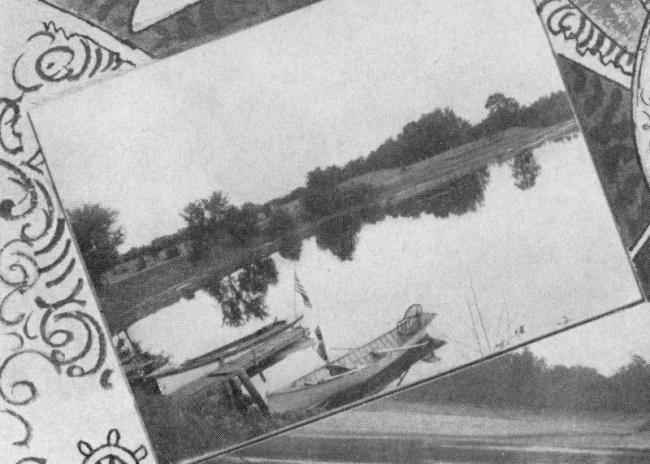
Canoeing was a popular pastime. Some years later the Department of Physical Education for Women at
the Teachers College offered a credit course on that skill.
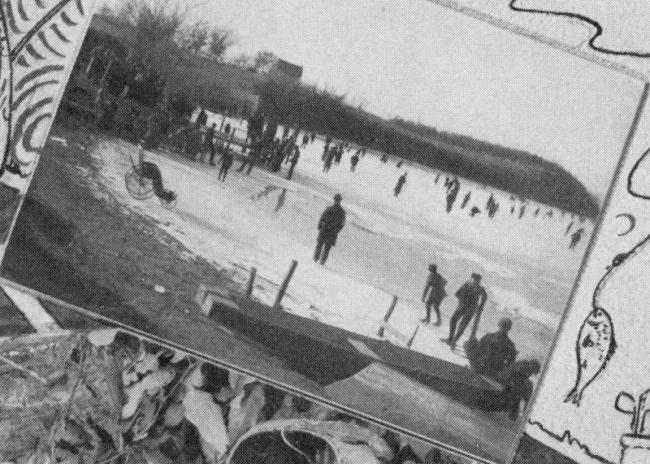
It looks as if ice skating on the Cedar River drew quite a crowd on this winter day. The unoccupied
wheelchair invites all kinds of speculation. This shot was likely taken just west of Franklin Street, and
looking toward Rownd's Bluff in the distance on the right.
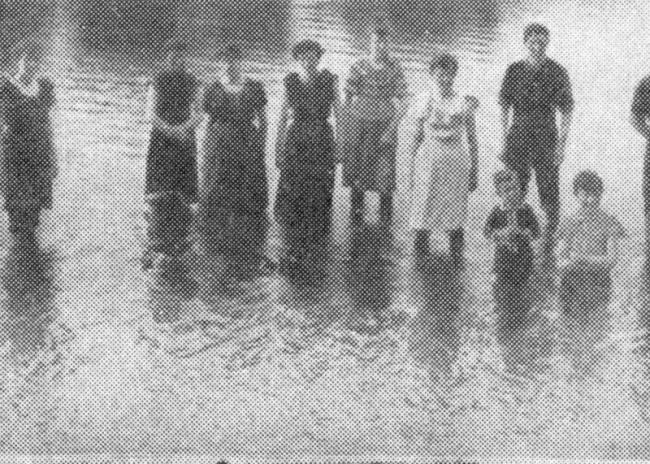

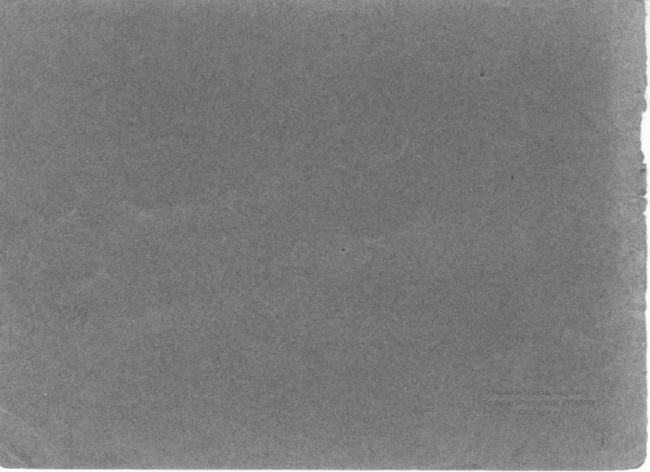
Outside back cover; blank inside back cover not scanned. Stamped in gold, in the lower left corner:
Franklin Engraving Co., Designers, Engravers, Printers, Chicago
Scanning by Library Assistant Joy Lynn; essay by University Archivist Gerald L. Peterson, November-December 2013; last updated, December 11, 2013 (GP).
